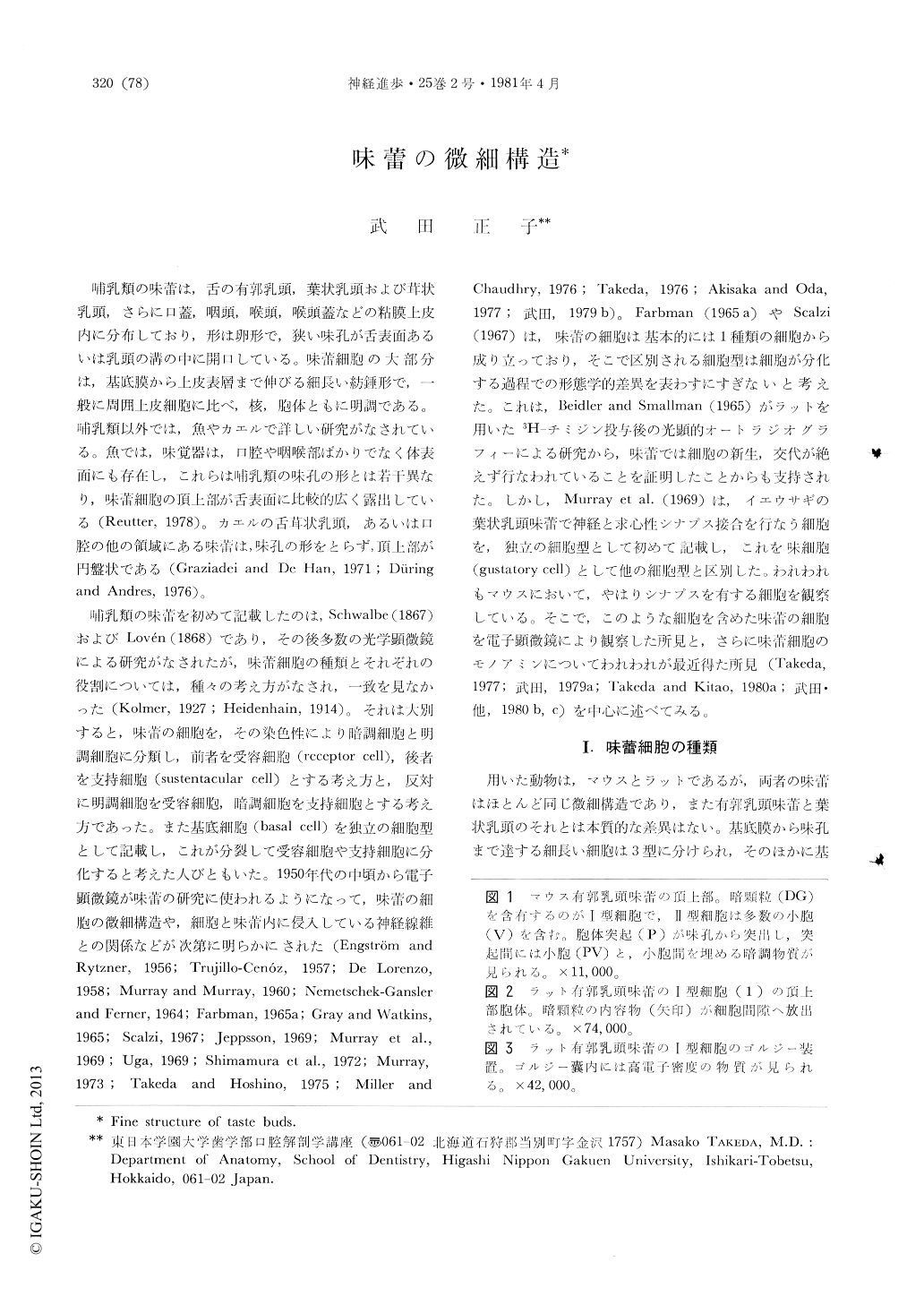Japanese
English
- 有料閲覧
- Abstract 文献概要
- 1ページ目 Look Inside
哺乳類の味蕾は,舌の有郭乳頭,葉状乳頭および茸状乳頭,さらに口蓋,咽頭,喉頭,喉頭蓋などの粘膜上皮内に分布しており,形は卵形で,狭い味孔が舌表面あるいは乳頭の溝の中に開口している。味蕾細胞の大部分は,基底膜から上皮表層まで伸びる細長い紡錘形で,一般に周囲上皮細胞に比べ,核,胞体ともに明調である。哺乳類以外では,魚やカエルで詳しい研究がなされている。魚では,味覚器は,口腔や咽喉部ばかりでなく体表面にも存在し,これらは哺乳類の味孔の形とは若干異なり,味蕾細胞の頂上部が舌表面に比較的広く露出している(Reutter,1978)。カエルの舌茸状乳頭,あるいは口腔の他の領域にある味蕾は,味孔の形をとらず,頂上部が円盤状である(Graziadei and De Han,1971;Düringand Andres,1976)。
哺乳類の味蕾を初めて記載したのは,Schwalbe(1867)およびLovén(1868)であり,その後多数の光学顕微鏡による研究がなされたが,味蕾細胞の種類とそれぞれの役割については,種々の考え方がなされ,一致を見なかった(Kolmer,1927;Heidenhain,1914)。
Summary
The taste buds contain four distinct types of cells in the mouse and rat tongues. The type I cell is characterized by the presence of dense granules, which are precursor of the dense sub-stance in the taste pore. The type II cell is filled with numerous vesicles and smooth-surfaced endo-plasmic reticulum. The type III (gustatory) cell contains scattered large dense-cored vesicles (80~100nm in diameter) throughout the cytoplasm and establishes specialized contacts with nerve terminals, which are regarded as afferent synapses.

Copyright © 1981, Igaku-Shoin Ltd. All rights reserved.


